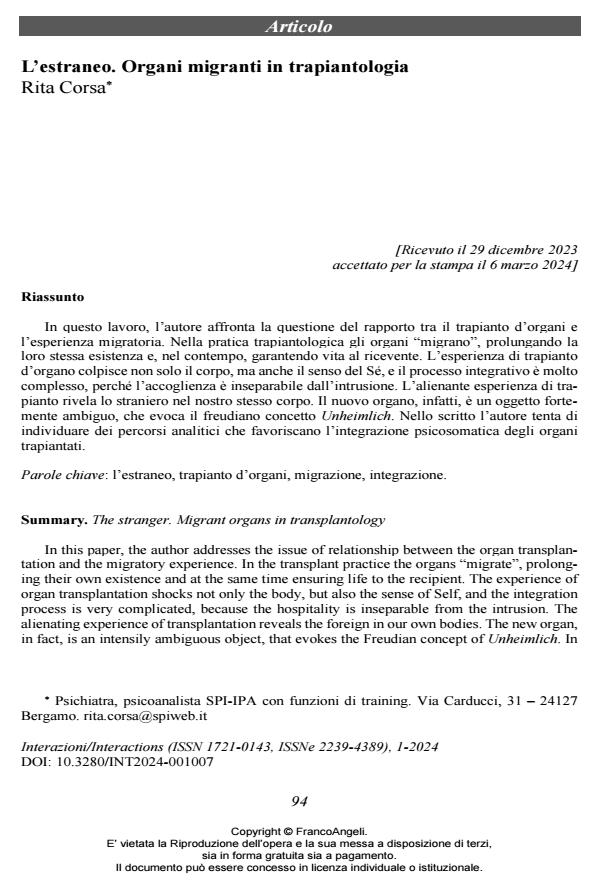The stranger. Migrant organs in transplantology
Journal title INTERAZIONI
Author/s Rita Corsa
Publishing Year 2024 Issue 2024/1
Language Italian Pages 14 P. 94-107 File size 182 KB
DOI 10.3280/INT2024-001007
DOI is like a bar code for intellectual property: to have more infomation
click here
Below, you can see the article first page
If you want to buy this article in PDF format, you can do it, following the instructions to buy download credits

FrancoAngeli is member of Publishers International Linking Association, Inc (PILA), a not-for-profit association which run the CrossRef service enabling links to and from online scholarly content.
In this paper, the author addresses the issue of relationship between the organ transplanta-tion and the migratory experience. In the transplant practice the organs “migrate”, prolonging their own existence and at the same time ensuring life to the recipient. The experience of organ transplantation shocks not only the body, but also the sense of Self, and the integration pro-cess is very complicated, because the hospitality is inseparable from the intrusion. The alienat-ing experience of transplantation reveals the foreign in our own bodies. The new organ, in fact, is an intensily ambiguous object, that evokes the Freudian concept of Unheimlich. In this contribution the author tries to identify some analytical paths that could favour the psychoso-matic integration of transplanted organs.
Keywords: the stranger, organ transplantation, migration, integration.
Rita Corsa, L’estraneo. Organi migranti in trapiantologia in "INTERAZIONI" 1/2024, pp 94-107, DOI: 10.3280/INT2024-001007